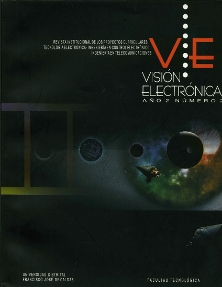DOI:
https://doi.org/10.14483/22484728.18387Publicado:
2018-08-13Número:
Vol. 1 Núm. 2 (2018): Edición especialSección:
Visión de CasoLeach performance analysis varying the percentage of cluster head
Análisis de desempeño de leach variando el porcentaje de cluster head
Palabras clave:
Data traffic, Energy, Hierarchical Routing, LEACH (en).Palabras clave:
Tráfico de datos, Energía, Enrutamiento Jerárquico, LEACH (es).Descargas
Resumen (en)
The LEACH protocol is a “standard” protocol used in the analysis and simulation of wireless sensor networks. This article analyzes the effect of varying parameter values in the LEACH protocol. In particular, the case of varying cluster head node assignments to , , and of the total nodes of the network. Specifically, it shows the energy effect of this variation and the corresponding data traffic analysis, showing simulation results that illustrate the behavior resulting from this variation by using an approach of time-division multiplexing on the clusters.
Resumen (es)
El protocolo LEACH es un protocolo “patrón” utilizado en análisis y simulación de redes de sensores inalámbricos. En este artículo, se analiza el efecto de variar los valores de los parámetros utilizados en el protocolo LEACH que, para el caso particular, se presenta la variación de asignación de nodos Cluster Head en porcentajes del , y del total de los nodos de la red. En particular, se muestra el efecto energético de esta variación y su respectivo análisis de tráfico de datos, presentando resultados de simulación que ilustran el comportamiento de esta variación, bajo un enfoque de acceso múltiple por división de tiempo sobre los cluster encontrados por LEACH.
Referencias
B. A. Bakr and L. T. Lilien, “Extending Lifetime of Wireless Sensor Networks by Management of Spare Nodes”, Procedia Comput. Sci., vol. 34, 2014, pp. 493–498. https://doi.org/10.1016/j.procs.2014.07.053
B. A. Bakr and L. T. Lilien, “Comparison by Simulation of Energy Consumption and WSN Lifetime for LEACH and LEACH-SM”, Procedia Comput. Sci., vol. 34, 2014, pp. 180–187. https://doi.org/10.1016/j.procs.2014.07.084
A. A. Babayo, M. H. Anisi and I. Ali, “A Review on energy management schemes in energy harvesting wireless sensor networks”, Renew. Sustain. Energy Rev., vol. 76, 2017, pp. 1176–1184. https://doi.org/10.1016/j.rser.2017.03.124
Y. Touati, A. Ali-Chérif and B. Daachi, “Routing Information for Energy Management in WSNs”, Energy Management in Wireless Sensor Networks, 2017, pp. 23–51. https://doi.org/10.1016/B978-1-78548-219-9.50003-5
W. Ke, O. Yangrui, J. Hong, Z. Heli and L. Xi, “Energy aware hierarchical cluster-based routing protocol for WSNs”, J. China Univ. Posts Telecommun., vol. 23, no. 4, 2016, pp. 46–52. https://doi.org/10.1016/S1005-8885(16)60044-4
A. Boubrima, W. Bechkit and H. Rivano, “Optimal WSN Deployment Models for Air Pollution Monitoring”, IEEE Transactions on Wireless Communications, vol. 16, no. 5, 2017, pp. 2723–2735. https://doi.org/10.1109/TWC.2017.2658601
A. Boubrima, W. Bechkit and H. Rivano, “A new WSN deployment approach for air pollution monitoring”, 14th IEEE Annual Consumer Communications & Networking Conference (CCNC), 2017, pp. 455–460. https://doi.org/10.1109/CCNC.2017.7983151
N. Aitsaadi, N. Achir, K. Boussetta and G. Pujolle, “Multi-Objective WSN Deployment: Quality of Monitoring, Connectivity and Lifetime”, IEEE International Conference on Communications, 2010, pp. 1–6. https://doi.org/10.1109/ICC.2010.5502276
J. Xu, H. Wang, F. Lang, P. Wang and Z. Hou, “Study on WSN topology division and lifetime”, IEEE International Conference on Computer Science and Automation Engineering, 2011, pp. 380–384. https://doi.org/10.1109/CSAE.2011.5953244
A. C. Santos, C. Duhamel and L. Silva Belisário, “Heuristics for designing multi-sink clustered WSN topologies”, Engineering Applications of Artificial Intelligence, vol. 50, 2016, pp. 20–31. https://doi.org/10.1016/j.engappai.2015.12.008
J. P. Anzola, S. J. Bolanos-Castro and G. M. Tarazona-Bermudez, “Design Methodology for Self-organized Mobile Networks Based”, International Journal of Interactive Multimedia and Artificial Intelligence, vol. 3, no. 7, 2016, pp. 46-53, 2016. http://dx.doi.org/10.9781/ijimai.2016.377
T. Wang et al., “Reliable wireless connections for fast-moving rail users based on a chained fog structure”, Information Sciences, vol. 379, 2017, pp. 160–176. https://doi.org/10.1016/j.ins.2016.06.031
O. Krejcar, “Inefficient WiFi adapter of wireless mobile devices - Problem solving by artifacts prebuffering using mobile database cache and secured wireless connection”, IEEE EUROCON, 2009, pp. 347–352. https://doi.org/10.1109/EURCON.2009.5167654
F. Xiangning and S. Yulin, “Improvement on LEACH Protocol of Wireless Sensor Network”, International Conference on Sensor Technologies and Applications (SENSORCOMM), 2007, pp. 260–264. https://doi.org/10.1109/SENSORCOMM.2007.4394931
Z. Andleeb, M. R. Anjum and M. U. Sardar, “Study the impact of multiple mobile sinks on lifetime of wireless sensor networks”, Sixth International Conference on Innovative Computing Technology (INTECH), 2016, pp. 418–422. https://doi.org/10.1109/INTECH.2016.7845065
M. T. Garrosi, B. Zafar and M. Haardt, “Prolonged network life-time in self-organizing peer-to-peer networks with E-RSSI clustering”, IEEE International Conference on Communications (ICC), 2012, pp. 5558–5562. https://doi.org/10.1109/ICC.2012.6364954
W. R. Heinzelman, A. Chandrakasan and H. Balakrishnan, “Energy-efficient communication protocol for wireless microsensor networks”, Proceedings of the 33rd Annual Hawaii International Conference on System Sciences, 2002, pp. 10. https://doi.org/10.1109/HICSS.2000.926982
C. T. Sony, C. P. Sangeetha and C. D. Suriyakala, “Multi-hop LEACH protocol with modified cluster head selection and TDMA schedule for wireless sensor networks”, Global Conference on Communication Technologies (GCCT), 2015, pp. 539–543. https://doi.org/10.1109/GCCT.2015.7342720
J. Anzola, J. Pascual, G. Tarazona and R. González, “A Clustering WSN Routing Protocol Based on k-d Tree Algorithm”, Sensors, vol. 18, no. 9, 2018, pp. 2899. https://dx.doi.org/10.3390%2Fs18092899
L. Mao and Y. Zhang, “An energy-efficient LEACH algorithm for wireless sensor networks”, 36th Chinese Control Conference (CCC), 2017, pp. 9005–9009. https://doi.org/10.23919/ChiCC.2017.8028790
J. P. Anzola, A. C. Jimenez and J. C. Cuellar, “Evaluation of QoS in the Transmission of Video H. 264/SVC for Ad Hoc Networks of Two Jumps”, International Journal of Computer Applications, vol. 108, no. 19, 2014, pp. 1–8. https://doi.org/10.5120/19016-0539
J. P. Anzola, A. C. Jimenez and L. A. Caycedo, “Impact of Delay
and PDR on Video Transmission H. 264/SVC in Dense and Sparse Topologies over Ad Hoc Networks”, International Journal of Computer Applications, vol. 87, no. 13, 2014, pp. 34–41. https://doi.org/10.5120/15271-3895
Cómo citar
APA
ACM
ACS
ABNT
Chicago
Harvard
IEEE
MLA
Turabian
Vancouver
Descargar cita
Licencia
Derechos de autor 2018 Visión electrónica

Esta obra está bajo una licencia internacional Creative Commons Atribución-NoComercial 4.0.
.png)
atribución- no comercial 4.0 International






.jpg)





